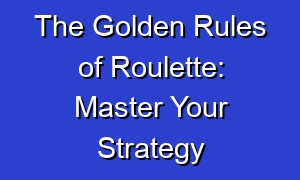Beginner’s Guide to Blackjack: Rules & Tips

Learn the essential blackjack rules and useful tips for beginners to improve your chances of winning. Discover the basic strategies and key concepts to enhance your understanding of this popular casino card game. Master the rules and gain confidence at the blackjack table with these valuable insights.
If you’re new to blackjack, understanding the rules and picking up a few tips can greatly improve your chances of winning. Blackjack is a popular casino card game where the goal is to get a hand total as close to 21 as possible without going over. To start, familiarize yourself with the basic rules. Each player is dealt two cards and can choose to hit (receive another card) or stand (keep their current hand). It’s important to know when to hit or stand based on your hand and the dealer’s upcard. Additionally, consider using strategies like card counting or basic strategy charts to further enhance your gameplay. Remember, blackjack is a game of skill and luck, so practice and patience are key. By understanding the rules and implementing effective tips, you’ll be well on your way to mastering this exciting casino game.
| Blackjack rules are relatively simple and easy to learn for beginners. |
| Understanding the value of each card is crucial in blackjack. |
| Beginners should aim to get a hand value as close to 21 without exceeding it. |
| Knowing when to hit, stand, double down, or split can greatly improve your chances in blackjack. |
| Tips for beginners: Start with low bets and practice basic strategy. |
- Blackjack is a game of skill and strategy, not just luck.
- Always assume the dealer’s face-down card is a 10 to make better decisions.
- Learn and memorize the basic blackjack strategy chart for optimal play.
- Avoid taking insurance bets as they have a higher house edge.
- Counting cards is a strategy used by advanced players to gain an edge.
Contents
What are the basic rules of blackjack?
The basic rules of blackjack are fairly simple. The goal of the game is to have a hand value that is closer to 21 than the dealer’s hand, without exceeding 21. Each player is dealt two cards initially, and they can choose to hit (receive another card) or stand (keep their current hand). The dealer also receives two cards, one face-up and one face-down. Players can continue to hit until they are satisfied with their hand or they exceed 21, which results in a bust.
| Rule 1: | Rule 2: | Rule 3: |
| The goal is to have a hand value closer to 21 than the dealer’s hand without exceeding 21. | Number cards are worth their face value, face cards are worth 10, and an Ace can be worth 1 or 11. | If the player’s hand exceeds 21, they “bust” and lose their bet. |
| Players are dealt two cards initially, and the dealer is dealt one card face up and one card face down. | Players can choose to “hit” and receive another card, or “stand” and keep their current hand. | If the dealer’s hand value is 16 or less, they must hit. If it’s 17 or more, they must stand. |
| If the player’s initial two cards are an Ace and a 10-value card, they have a “blackjack” and win 1.5 times their bet, unless the dealer also has a blackjack. | Players can also choose to “double down” and double their initial bet, but they will receive only one additional card. | If the player and the dealer both have the same hand value, it is a “push” and the player’s bet is returned. |
How do you determine the value of cards in blackjack?
In blackjack, the value of cards is determined as follows: numbered cards (2-10) are worth their face value, face cards (Jack, Queen, King) are worth 10, and an Ace can be worth either 1 or 11, depending on the player’s choice. The total value of a hand is calculated by adding up the individual card values.
- Number cards (2-10) are worth their face value. For example, a 2 is worth 2 points, a 3 is worth 3 points, and so on.
- Face cards (Jack, Queen, and King) are each worth 10 points.
- The Ace card can be worth either 1 or 11 points, depending on which value benefits the player the most. For example, if the player has an Ace and a 6, the Ace can be counted as either 1 or 11, giving the player a total of either 7 or 17 points.
What is the objective of blackjack?
The objective of blackjack is to beat the dealer by having a hand value that is closer to 21 without going over. If a player’s hand exceeds 21, they bust and automatically lose the round. If the player’s hand value is lower than the dealer’s but still under 21, they lose. The player wins if their hand value is higher than the dealer’s or if the dealer busts.
- The objective of blackjack is to have a hand with a total value closer to 21 than the dealer’s hand without exceeding 21.
- Players aim to beat the dealer by either getting a higher hand value or having the dealer’s hand exceed 21 (bust).
- Each player is initially dealt two cards and can choose to “hit” (receive additional cards) or “stand” (keep their current hand) in an attempt to improve their hand value.
- Players can also choose to “double down” or “split” their hand under certain conditions to increase their chances of winning.
- The objective is to make strategic decisions based on the value of the player’s hand and the dealer’s visible card to maximize the chances of winning the round.
When should you double down in blackjack?
Doubling down in blackjack allows players to double their initial bet in exchange for receiving one additional card. It is typically advantageous to double down when a player has a hand value of 9, 10, or 11, and the dealer’s face-up card is weak (2-6). This strategy increases the player’s potential winnings when the odds are in their favor.
| When to Double Down | When Not to Double Down | Strategy |
| When you have a total of 9, 10, or 11 and the dealer’s up card is weak (2-6). | When you have a total of 12 or more and the dealer’s up card is strong (7-Ace). | Double your initial bet and receive one additional card. |
| When you have a total of 10 and the dealer’s up card is 9 or lower. | When you have a total of 8 or less. | If your total is less than 9, hit instead of doubling down. |
| When you have a soft hand (an Ace and another card that can be counted as 1 or 11) and the dealer’s up card is weak. | When you have a hard hand (no Ace or an Ace that can only be counted as 1) and the dealer’s up card is strong. | Double down only if the rules allow doubling down on soft hands. |
What is the insurance bet in blackjack?
The insurance bet in blackjack is a side bet that can be placed when the dealer’s face-up card is an Ace. It allows players to protect themselves against the possibility of the dealer having a blackjack (a hand value of 21). If the player chooses to take insurance and the dealer does have a blackjack, the insurance bet pays out at 2:1 odds. However, if the dealer does not have a blackjack, the insurance bet is lost.
The insurance bet in blackjack is a side bet that can be placed when the dealer’s face-up card is an Ace. It is a bet on whether the dealer has a blackjack or not.
What is splitting in blackjack?
Splitting in blackjack is an option available to players when they are dealt two cards of the same rank. The player can choose to split their hand into two separate hands and place an additional bet equal to their original bet. Each hand is then played independently, with the player making decisions for each hand separately. This strategy can increase the player’s chances of winning if used correctly.
In blackjack, splitting refers to the option of dividing a pair of identical cards into two separate hands.
What are some tips for beginners playing blackjack?
For beginners playing blackjack, it is important to familiarize yourself with the basic rules and strategies of the game. It is recommended to start with a low betting limit until you become more comfortable with the game. Additionally, it is advisable to avoid taking insurance bets and focus on learning basic strategy, such as when to hit, stand, double down, or split. Practice and patience are key to improving your skills and increasing your chances of winning in blackjack.
1. Understand the Basic Rules
It is crucial for beginners to have a good understanding of the basic rules of blackjack. Familiarize yourself with the objective of the game, which is to beat the dealer’s hand without exceeding 21. Learn about the values of the cards, such as the numbered cards being worth their face value, face cards (Jack, Queen, King) being worth 10, and the Ace being worth 1 or 11. Knowing these rules will help you make better decisions during gameplay.
2. Start with a Strategy Chart
Using a strategy chart is an excellent way for beginners to improve their gameplay. These charts provide you with the optimal move to make based on your hand and the dealer’s upcard. They can help you make more informed decisions and increase your chances of winning. Start by using a basic strategy chart, which is readily available online, and refer to it until you become more comfortable with the game.
3. Manage Your Bankroll
Proper bankroll management is essential in blackjack. Determine a budget for your blackjack sessions and stick to it. Avoid chasing losses or betting more than you can afford to lose. It is recommended to bet around 1-2% of your total bankroll per hand. By managing your bankroll effectively, you can minimize your losses and extend your playing time, giving you more opportunities to win.

















